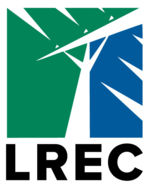Rate Study Underway
Lake Region Electric Cooperative is always looking ahead. We’re committed to being proactive while remaining true to our cooperative principles. We pride ourselves on serving our member-owners within a framework of accountability, integrity, innovation, and commitment to community.
In August, our board of directors reviewed the first draft of a rate study conducted recently by our consultants, The Prime Group, LLC. The study was comprehensive in comparing all the costs that go into providing electric service to each of Lake Region’s rate classifications. While the study revealed that rate adjustments will be necessary in 2017, it would be premature to release any final numbers at this time.
Setting rates must be based on facts. The rate study revealed our true costs to serve each classification of member—whether residential, commercial, industrial, agricultural, or outdoor lighting. Armed with this updated information, we will determine rates that will be fair and set at a level that will allow Lake Region to provide reliable service to its entire membership.
There are three basic components considered when designing retail electric rates.
- The Facility Charge is intended to recover Lake Region’s fixed costs of providing an energized single-phase or three-phase service. Included in this charge are costs associated with our physical electrical equipment, poles, conductor, metering, bill processing, insurance, and so forth. This component must recover the cost of the minimum amount of equipment that is necessary to provide a cooperative member with access to the electric grid. Because Lake Region serves a primarily rural area, we simply do not have as many accounts who can share the costs of these facilities as compared to an investor-owned utility (IOU) or a municipal utility that serves cities and towns. However, we still need these facilities in order to provide everyone with the same quality of service.
- The Energy Charge you pay is dependent on the actual kilowatt hours (kWh) that are consumed at your location. The Energy Charge is based on Lake Region’s wholesale power costs plus the cost of delivering that electricity to our members through our distribution system. The wholesale cost of power is the largest component of this charge and reflects the changing costs associated with the central station generation of electricity and its transmission to the substations that serve our area.
- A third component, a Demand Charge appears only on the bills of members who are on a demand rate because they are very large power accounts which operate various machinery and motors. Lake Region must be able to provide all the energy required at the time the member needs it, even if that energy is only needed periodically or for short periods of time. This increases our costs, so to be fair to the remaining cooperative members, accounts that have the potential to create high demand for electricity are placed on a demand rate.
It is important to note that it is your local, peer-elected board of directors which sets the cooperative’s retail rates. The cooperative’s goal is to operate as a not-for-profit utility and to recover all of the costs associated with serving each rate classification. A lot of thought and analysis goes into determining fair and equitable rates. This is a task that your board of directors and our management team takes very seriously. It’s an integral part of planning for Lake Region’s financial well-being and business stability in years to come. As we finalize the rates and financial plan for 2017, we’ll be sure to communicate this important information to you.
Website Redesigned
We recently launched a redesigned website. We’ve streamlined our quick links to make it fast and easy to find what you need. For instance:
- Use SmartHub to view and pay your bill
- Track your energy usage on MyMeter
- Stay informed with Outage Center
- See the energy output of Lake Region Community Solar
- Find information on Featured Services and Products

In case you are wondering how we were able to take photos from an interesting aerial viewpoint, we accomplished this with the help of a drone. We hope you’ll enjoy the “pole-top” perspective!
Tim Thompson, CEO

 Lake Region Electric Cooperative
Lake Region Electric Cooperative